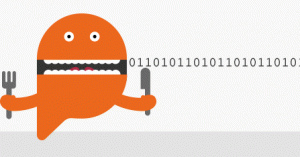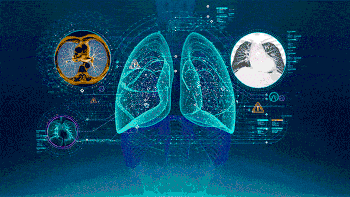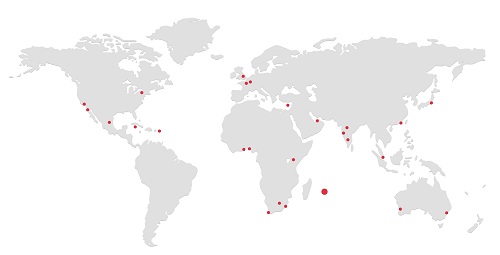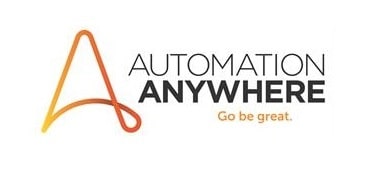SaaS Development
The SaaS (Software as a Service) market has grown rapidly in recent years, driven by the increasing adoption of cloud computing and digital transformation initiatives by businesses of all sizes.

The SaaS (Software as a Service) market has grown rapidly in recent years, driven by the increasing adoption of cloud computing and digital transformation initiatives by businesses of all sizes.
SaaS (Software as a Service) development involves creating software applications that are hosted and delivered over the internet, rather than being installed and run locally on individual computers or servers. SaaS applications are typically accessed through a web browser and can be used on a subscription or pay-per-use basis.
The process of SaaS development typically involves several stages, including:
Ideation: This is the initial stage where the concept of the software application is defined, including its purpose, features, target audience, and business model.
Design: Once the concept is defined, the software design process begins. This involves creating wireframes, prototypes, and user interface designs to visualize the application’s functionality and user experience.
Development: This is the stage where the actual coding of the application takes place. Developers use programming languages and frameworks to build the application’s core functionality.
Testing: After the application is developed, it undergoes a rigorous testing process to ensure that it is functioning as intended and is free of bugs and errors.
Deployment: Once the application is tested and approved, it is deployed to a production environment and made available to end-users.
Maintenance: SaaS applications require ongoing maintenance to ensure that they continue to function correctly and are updated with new features and security patches.
Overall, SaaS development involves a collaborative effort between software developers, designers, product managers, and other stakeholders to create a software application that meets the needs of its intended users and provides value to the business that owns it.
DON’T FOLLOW DIGITAL TRENDS. START THEM.
There are many different types of SaaS (Software as a Service) software applications available, which can be used to meet a wide range of business needs. Here are some examples of popular types of SaaS software:
Customer Relationship Management (CRM) software: This type of software is used to manage customer interactions and relationships, and typically includes features such as sales automation, customer service and support, and marketing automation.
Human Resources (HR) software: HR SaaS software is used to manage employee information, benefits, payroll, and other HR-related tasks.
Project Management software: This type of software is used to manage projects, tasks, and team collaboration, and often includes features such as task tracking, team communication, and time tracking.
Accounting software: SaaS accounting software is used to manage financial transactions, including invoicing, payments, and expense tracking.
Marketing automation software: This type of software is used to automate marketing tasks, such as email marketing campaigns, social media posting, and lead tracking.
E-commerce software: SaaS e-commerce software is used to manage online sales, including product listings, inventory management, and payment processing.
Helpdesk software: This type of software is used to manage customer support inquiries and typically includes features such as ticket management, knowledge base creation, and customer service analytics.
Learning Management System (LMS) software: This type of software is used to deliver and manage online training and education courses, often for businesses or academic institutions.
These are just a few examples of the many types of SaaS software available, and there are many more niche applications that can be used to meet specific business needs.

The SaaS (Software as a Service) market has grown rapidly in recent years, driven by the increasing adoption of cloud computing and digital transformation initiatives by businesses of all sizes. According to a report by Statista, the global SaaS market size was valued at approximately $101 billion in 2020 and is projected to grow to over $190 billion by 2024.
The adoption of SaaS solutions varies by region, with North America and Europe currently leading in terms of market share. According to a report by Synergy Research Group, North America accounted for approximately 63% of the global SaaS market in 2020, followed by Europe with around 22%. Asia Pacific and other regions are also seeing rapid growth in SaaS adoption and are expected to gain market share in the coming years.
Within the SaaS market, certain application categories are more popular than others. According to a report by Gartner, the largest SaaS application category is CRM, which accounted for approximately 18% of the total SaaS market in 2020. Other popular categories include ERP, collaboration software, and human capital management (HCM) software.
Overall, the SaaS market is expected to continue its strong growth trajectory in the coming years, as businesses continue to embrace cloud-based solutions to drive productivity, efficiency, and innovation.
Better insight of business data from various aspects, enhance operation and increase sales. Recent AI Insights into artificial intelligence, machine learning, and beyond.
WDG is helping companies worldwide achieve blockchain implementation for education, ideation, strategy, prototyping, and development. Information to be recorded and distributed.
We are able to deliver different services through the Internet or cloud computing. These resources include tools and applications like data storage, servers, databases, networking, and software.
ERP refers to a software that organizations use to manage day-to-day business activities such as accounting, project management, risk management, and supply chain operations.
We'll update you with new in Artificial Intelligence, Machine Learning, Robotic Process Automation, Edge Computing, Quantum Computing, Virtual Reality and Augmented Reality, Blockchain & IoT
Security refers to methods, tools used to defend an organization's digital assets. The goal of security is to protect assets and services from being disrupted, stolen or exploited by unauthorized users

Yes, enterprise software can be very valuable for businesses. Enterprise software is designed to support and improve various aspects of a business’s operations, making it easier for companies to manage their resources, communicate with stakeholders, and make informed decisions based on data analysis.
Enterprise software can help businesses to streamline their operations, automate routine tasks, and reduce the potential for errors or delays in key business processes. This can result in increased efficiency and productivity, as well as cost savings, as businesses can more effectively manage their resources and reduce waste.
In addition, enterprise software can provide businesses with a range of insights and analytics that can help them to make informed decisions and improve their overall performance. For example, business intelligence software can help companies to better understand their data, identify trends, and forecast future performance, while customer relationship management software can help businesses to better engage with customers and build stronger relationships.
Overall, enterprise software can be a powerful tool for businesses looking to improve their operations, increase efficiency, and gain a competitive edge in their industry. However, it’s important for businesses to carefully evaluate their needs and select the right software solutions to meet their specific requirements and goals.






End-to-end SaaS (Software as a Service) application development refers to the process of creating a complete software application from start to finish, including all stages of the software development life cycle (SDLC). This involves designing, developing, testing, and deploying a SaaS application that meets the needs of its intended users and provides value to the business that owns it.
Here are the key steps involved in end-to-end SaaS application development:
Ideation: The first step is to identify the business problem that the application is intended to solve and develop a clear understanding of the target users and their needs.
Planning: Once the business problem has been identified, the project team will create a plan that includes timelines, resource allocation, and milestones for the project.
Design: In this stage, the project team will create a user interface (UI) and user experience (UX) design that is intuitive, user-friendly, and aligns with the target users’ needs.
Development: The development team will use programming languages and frameworks to build the application’s core functionality, using Agile methodologies to ensure that the application is developed in an iterative and incremental manner.
Testing: After the application is developed, it undergoes a rigorous testing process to ensure that it is functioning as intended and is free of bugs and errors.
Deployment: Once the application is tested and approved, it is deployed to a production environment and made available to end-users.
Maintenance: SaaS applications require ongoing maintenance to ensure that they continue to function correctly and are updated with new features and security patches.
Throughout the development process, project teams must ensure that the application is scalable, secure, and can handle large volumes of data and traffic. They must also ensure that the application is compliant with industry regulations and standards, such as GDPR and HIPAA.
Overall, end-to-end SaaS application development requires a multidisciplinary team of software developers, designers, product managers, and other stakeholders to create a high-quality application that meets the needs of both users and the business that owns it.

Healthcare Technologies understands natural language and is capable of reacting to questions asked of it. The system mines patient data & other accessible data sources to shape a theory, which then presents with a certainty scoring schema. A computer program used to answer questions and assist patients, to help calendar follow-up appointments or aiding patients through the billing procedure & virtual assistants.

AI can automate reviewing, giving teachers additional time. AI can assess students and adjust to their requirements, helping them work at their particular pace. AI tutors can give extra help to students, ensuring they remain on track. AI could change where and how students learn, perhaps even replacing some teachers task.

Robotic process automation is being connected to highly repetitive tasks normally performed by people. Machine learning calculations are being coordinated into analytics and CRM platforms to reveal data on how to best way to all the more likely serve customers. We have been consolidated into sites to give quick service to customers. Automation of job positions has also turned into an idea among academics.
| 1 | SINGAPORE | REPUBLIC OF KOREA | 93.23% |
| 2 | JAPAN | GERMANY | 80.43% |
| 3 | SWEDEN | DENMARK | 70.35% |
| 4 | ITALY, BELGIUM | USA | 67.87% |
| 5 | TAIWAN | UNITED KINGDOM | 65.94% |
| 6 | CANADA | FRANCE | 64.34% |

Robot density is a measurement that tracks the number of robots per 10,000 workers in an industry. This shows more countries are turning to automation to fill their manufacturing needs.

Blue Prism is a Robotic Process Automation software. It provides businesses and organizations with an agile digital workforce.

Automation Anywhere is a developer of robotic process automation (RPA) software.

UiPath is Robotic Process Automation software. It helps organizations efficiently automate business processes.
Why we are different? Super Web Development LLP brings together digital innovation Architecture and Technology with the best business ideas. Don’t follow Digital Trends.. Start them.
Don’t miss out on thousands of super cool packages and promotions
HOTLINE: +91 9873 161 789
(Free Call, 8:00 – 22:00)
B11 3rd-Floor, Sector 121,
Noida, india 201301

